 Back to the Buster Stars Interviews
Back to the Buster Stars Interviews
Allen Cummings - Editor 1981 to 1999
Allen Cummings joined Fleetway in 1963 as a teaboy. During his career he worked his way through the nursery papers and onto the launch team for Whoopee. In 1981, he arrived as editor of Buster and over the next 18 years he saw the comic through 5 mergers, two sales to Maxwell and then Egmont, and the decline of comic sales which saw Buster itself fold at the end of 1999.
Bustercomic.co.uk was lucky enough to track him down still at the Essex home from where Buster was produced for most of the final decade. Here he talks about his Fleetway life, the change in the industry and how Buster finally came to a close.
Allen, thank you for agreeing to talk to the site. Lew Stringer has already said you’d be working for Fleetway since 1963, so how did you get involved with the company?
It was my first job. I was a tea boy come messenger boy. I was 15 in the July and started at Fleetway in the August, which is what you used to do in those days.
And was it something you’d always wanted to get into?
Well no, really I always wanted to work in London, but an Uncle of mine worked at the Daily Telegraph and in those days the print was a very strong union and you had to be recommended to do anything in print, not just manually but anywhere at all in print, publishing or whatever.
He took me along to the interview for a company that must have acted like an agency for various publishing houses etc and within ten days or so I had the chance of an interview with Fleetway in Farringdon Street.
So how did you start working your way up within the company?
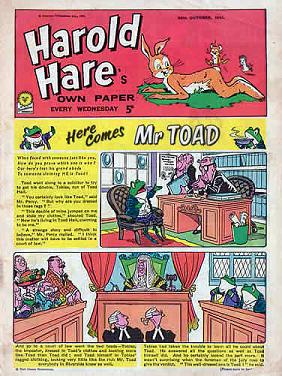 I went to work for Leonard Matthews who in those days was director and the real king pin of Fleetway comic. I was his tea boy and did a bit of running around collecting parcels, because the artists in those days used the train quite a lot to send their artwork to London and we went and got them.
I went to work for Leonard Matthews who in those days was director and the real king pin of Fleetway comic. I was his tea boy and did a bit of running around collecting parcels, because the artists in those days used the train quite a lot to send their artwork to London and we went and got them.
I was there for a year or so and the idea was you kind of progressed onto a comic somewhere along the line, because Fleetway in those days at Farringdon Street had five floors and there were various comics etc on all of them and I moved onto the nursery group with Jack and Jill, Play Hour and Harold Hare.
It gave me the opportunity at a later stage to start writing captions, so you began to be introduced to writing for the magazine. I think the first page I ever wrote for was the puzzle page and you just write the little captions. The puzzles would come in on a page and you would write the captions on explaining what you were supposed to do.
And then we went on to writing the captions under the picture pages for the nursery papers and then writing the scripts yourself, so it was a natural progression. The kids you were writing for were toddlers so it was more writing for the Mums and Dads and writing things in a certain way and I thought it was an excellent grounding for learning to actually write clear, concise and unfuddled captions.
So did you eventually write scripts for the actual strips then?
Yeah, in those days they were four pictures on a page, very simple story and captions underneath each one. I was on Jack and Jill to start with and my first strip was Fun in Toyland. Eventually, I wrote some scripts for Jack and Jill, who were always on the front cover, Harold Hare who had his own paper, then it folded and merged into Jack and Jill and he had his own strip in there. And you lend a hand to any strips that were required. You didn’t necessarily stick to the same old ones.
In those days the Nursery Papers were massive sellers. Teddy Bear, which was the creation of Leonard Matthews’ wife Barbara, that was a massive seller when that hit the stands. And Jack and Jill, Play Hour they sold 500,000 copies and they had other big, big sellers.
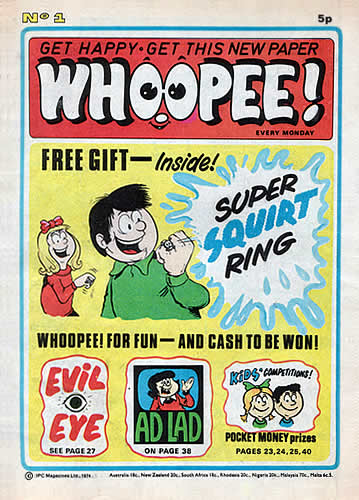 And it was a big time for Fleetway too, because as they went through the 60s and into the 70s there were lots of comics coming along, Whizzer & Chips came alongside Buster and Whoopee launched…
And it was a big time for Fleetway too, because as they went through the 60s and into the 70s there were lots of comics coming along, Whizzer & Chips came alongside Buster and Whoopee launched…
That’s right, well I was on Whoopee, I started on Whoopee. That was my first go at what you might call a knock-about comic. I went from Jack and Jill and Play Hour, onto Tiger, then I went to something called Football Star which was a Football Magazine. There was a magazine that did very well called Music Star, that went through the roof and they tried to replicate that in the football sense, so they called it Football Star, but it didn’t quite work. I think it did about a dozen issues.
From there I went to Bob Paynter’s group and he was about to launch Whoopee, so I was given the option of moving onto Whoopee.
We were kind of Chief Subs/Assistant Editors in those days. The editor was in fact what you might call the managing editor because he was the editor of not one but two, three or four papers. It was only a little bit later that they papers got their own editor, they changed the wording of the title, something to do with the wages they were paying.
Like you say that was the explosion, Whizzer & Chips, Whoopee, Cor!!, Knockout and all of those comics were coming out left right and centre.
And were you doing a similar thing for Whoopee that you did elsewhere?
Yeah, we didn’t write so many scripts in house. On those papers it was more Freelance scriptwriters but there were occasions when we were up against it where someone would sit down and write a script in an afternoon or something like that. But it wasn’t quite so much script writing as I’d experience on the nursery papers. They had a team of quite prolific scriptwriters in those days for the comics, churning out five/six comics a week, thirty two or twenty four pages in some cases it was quite a lot of workloads and they had to call in scriptwriters from all over the place.
And how when did you join Buster?
I didn’t move onto Buster until its 21st Birthday. I took over from someone called Len Wenn. I remember all of the birthday celebrations and me taking over just before that time. I think he was retiring and he’d decided when Buster turned 21, which was near his 65th Birthday anyway, that would be the time so that kind of fell into place. He moved aside and I came in and took over.
Through the 80s Buster incorporated various other Fleetway comics. What was that like, because you’d seen them all launching and now it was going the other way?
It was a bit sad really. I think the management had made up their mind that Buster was going to go on, a sort of a flagship. In some ways a rival to Beano and Dandy with some of the longevity that they had and they were determined to keep it going as long as possible.
I can’t remember exactly how the circulations went but I think that sometimes the circulations between Buster and the comics that merged into it weren’t too dissimilar, but it was always going to be that Buster was the parent.
So even if some of the comics were doing well alongside Buster it wouldn’t matter?
I think they’d made their mind up that Buster had that kudos in the comics industry and they wanted it to remain as their flagship for as long as possible so they were determined to keep that title going.
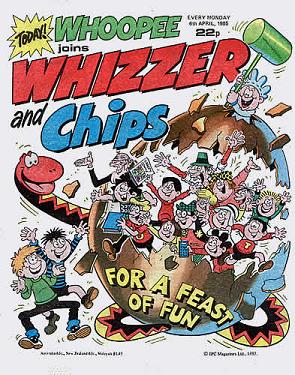 Having seen the empire grow and then contract leaving essentially just Buster, Whizzer & Chips and Whoopee, when Whoopee merged into Whizzer and Chips was that when you started realizing there wasn’t much left?
Having seen the empire grow and then contract leaving essentially just Buster, Whizzer & Chips and Whoopee, when Whoopee merged into Whizzer and Chips was that when you started realizing there wasn’t much left?
I think the writing was on the wall and by that time they were trying to cut costs and the word reprint had reared its head by that time and we were using previously printed material to try and keep the budgets as low as possible. Sometimes they chose a character and didn’t reprint every week, maybe every other week so they tried to do as much as they could but the writing was on the wall that the whole area as far as Fleetway was concerned, anyway, was contracting the whole time.
Once Whizzer & Chips merged into Buster it was at a similar time that the letters page moved out of Kings Reach Tower to Chelmsford, which I’m presuming was from your place. It was great for me as I lived down the road from Chelmsford and imagined a big factory where Buster was produced, but obviously it was a different story. What were the reasons behind the move?
I think it came about when Fleetway sold the comics market to Robert Maxwell. He actually bought into the comics and we went from Kings Reach Tower to somewhere in Southwark Street, a smaller building, I think it was called Irwin House.
But when Maxwell came on board, they were looking again to reduce all of our overheads and they worked out if they satellited, for want of a better word, the comics, had them produced outside at home they wouldn’t have the office costs etc, so that’s what they said. If you’re happy to work from home, we’ll give you a remuneration, it wasn’t a redundancy it was a kind of severance pay, and I came here and someone called John Smith was like the group editor, and he worked from home over in Yelverton which is over the back of Waltham Abbey and he set up the operation.
So they paid him a fee and he then passed that onto myself. They gave him a budget, we worked within that budget and so long as we gave them a magazine that they thought was value for money, what we did with that money was purely down to us.
So you still had editorial control over the comic and they just bought it in?
That’s right, they were buying it in as a job lot once a week. Although I was working from home, we had to go through the usual bit with alterations being done to artwork, corrections being done to blue lettering so we needed to meet up at a base, and we used some offices that were directly over the top of the London Transport Museum in Covent Garden and that was an office shared by Pat Kelleher.
Kelleher was one of the very old art agencies; in fact they were the original agent of Reg Parlett. Danny Kelleher was the Dad who started the agency and when Danny packed up Pat Kelleher carried on the agency and operated from Temple Chambers in a building right in Covent Garden above the London Transport Museum.
It was a lovely old building, big rooms up there and what we used to do was I went up there once a week and we used to take all the artwork over there, the entire issue and I’d meet up there with an artist who’d do all the corrections I’d marked on the artwork. I’d see that they were done, sign them off so to speak, and we’d wrap up the parcel and send it off to the printer.
We began to use a printer called David Bruce Graphics in Plaistow but funnily enough one of the directors lives about three roads away from me, so it was an easy handover. I used to give him the artwork, he’d do the necessary come back with the proofs I’d read them, and give them back.
So it was a real satellite operation, it was done the way it used to be done but it was done outside of a central office building.
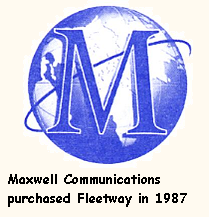 So the Maxwell Group didn’t have any involvement with what was going on?
So the Maxwell Group didn’t have any involvement with what was going on?
No, very rarely did we get any instruction from them. They were quite happy, the comic was produced for them, it was published under their logo and imprint and they were quite happy with that.
But then, the same old thing, of course. Sales began to drop off and they were looking for more and more savings so all they did was reduced the budget they were giving us. And the only way around that was to use more and more reprint, and you know yourself by the end of Buster virtually 100% reprint.
As a kid I was oblivious to it, but it’s fascinating to look through those 90s comics knowing what I know now, to see the signs. It wasn’t until in February or March 1999 when in one of the Buster strips he didn’t have the main Baseball cap and I thought “that’s a bit odd” but that was the first sign for me as a reader that anything was different. But when you look back you see the end was coming, was it always in mind to try and hang out for the 40th Birthday?
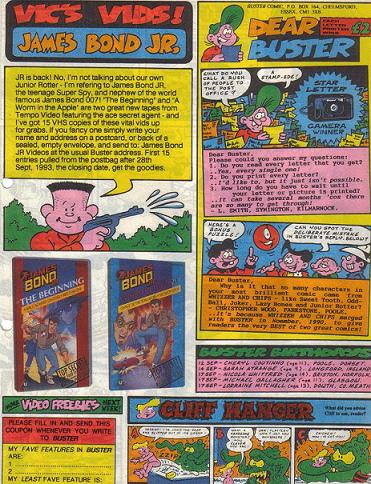 I don’t think so. No one really ever spoke to me about that. Obviously I was aware of it and we were trying desperately to keep it going just for that signing off and we only just about made it. But I can’t say for definite it was in their mind, I would think not because by that time they weren’t steeped in comic history, the people who took it on board or were involved in the end and I think it was purely by luck that we did get to where we got to.
I don’t think so. No one really ever spoke to me about that. Obviously I was aware of it and we were trying desperately to keep it going just for that signing off and we only just about made it. But I can’t say for definite it was in their mind, I would think not because by that time they weren’t steeped in comic history, the people who took it on board or were involved in the end and I think it was purely by luck that we did get to where we got to.
I worked very closely with Jack Oliver and they were the only new pages. He did the letters pages for me and we tried to keep it looking fresh and topical, that was superb those letters pages, he took them away and he made an art form of them, well Jack made an art form out of everything, he was amazing.
But it was our only opportunity on those pages to try and pretend we were new, but people like yourself were picking up that it was reprinted material, you knew it had been used before.
We put colour on pages that didn’t normally have colour and we did what we could do with the financial restraints we were under really.
With all of this going on, I imagine you were the guy who had to make numerous phone calls to artists. Lew Stringer commented on when you made the call to him about Tom Thug ending. How were you making the decisions as you were going along as to which strips were going into reprint or would end completely?
We used to have a criteria where we used to never reprint anything under five years, originally, because we reckoned maybe that the cycle of readers who might have picked it up as 7 year olds by 12 years old the majority of people had moved on. So, if you like that was our get out because we’re saying the new readers wouldn’t know it was old material. But some of the newer strips weren’t around that many years ago so it was difficult to reprint some of them.
We still maintained what we called the popularity chart with the little coupon there and we did religiously mark those down and use them. There was hardly a point using a strip that was grossly disliked, so we used that as well.
It wasn’t a cold calculated way of going about it. It was horrible really having to pick up the phone and say, unfortunately we’ve got finish this in 2, 3 or four weeks time. Particularly as you’re talking to people who’d served you very well for years and years.
Are you still in touch with any of the people who used to work on the comic?
I had a note from Terry Bave recently saying he’d moved. He’d lived for as long as I’d known him on the Isle of Wight but he’s moved to Devon. We’d been over to see a few times and he was steeped in the island so I’m going to ring him because I’ve never saw him leaving the Isle of Wight.
We do exchange Christmas cards with a number of the artists who are still around, and letterers. Jack Potter one of the great letterers in Aldwich, Jimmy Hansen down in Brighton, but we don’t do any more then exchange Christmas cards, but they’re still around.
I don’t know that there’s any kind of opportunity for them to meet up because, of course they’re all getting older and older.
And they’re all spread out around the country….
Yeah, that’s right they are.
Jack Oliver lived in Dartford and he used to come over here and see me, and that helped really that we were close enough to work together and be in the same room together. Lew was very good as well, but it’s never quite as easy when you don’t get to see them.
Coming back to the reprints, I’ve always had images of you or the Buster team wandering around giant vaults trying to find strips that you could use. How did you decide what strips were going to be brought back?
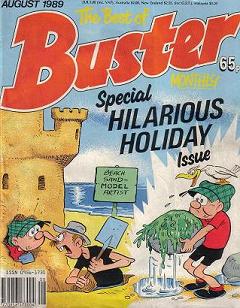 We never actually used the original artwork; we used printer’s film. I think we just used what was available particularly towards the end. When Fleetway went through the spell of using The Best of this or the Best of that it began to gobble up a lot of the material. Although there was a wealth of old material, some of it looked old so we couldn’t use that again and it began to gobble up the material, so our choices of reprint began to diminish somewhat.
We never actually used the original artwork; we used printer’s film. I think we just used what was available particularly towards the end. When Fleetway went through the spell of using The Best of this or the Best of that it began to gobble up a lot of the material. Although there was a wealth of old material, some of it looked old so we couldn’t use that again and it began to gobble up the material, so our choices of reprint began to diminish somewhat.
You had to make sure it was still topical and not grossly out of date, not commenting on something that can be easily picked up as being 30 years ago. But it wasn’t actually artwork, it was printer’s negative film.
There used to be a basement at Fleetway, but when Fleetway moved out of Farringdon Street and moved into Kings Reach Tower all of our material went to Long Acre and that used to be stored there. But it began to be overpowering, you can imagine all of this artwork, some it printed on big thick boards. The sheer volume of stuff became too much for the space available so that’s when they started to convert everything to film and we began to send back original artwork to the artist.
We didn’t do that originally, of course, they used to sell it to us and that would be that. But the big moment about it all was the fact the artists themselves didn’t get any reprint fee at all.
No, that’s actually been commented on a couple of times over the years when I’ve spoken to people.
Well in the old days when they used to get a cheque they had to sign the back of the cheque to cash it and written on the back under the signature was something to say they’ve signed all their rights away. So unless they sign their rights away they couldn’t cash their cheque!
In those days, of course, the work was there and they were quite happy to sign it away, but when the work began to disappear they regretted signing those things and it would have been nice if they’d got some minimal reprint fee, but they never got a penny.
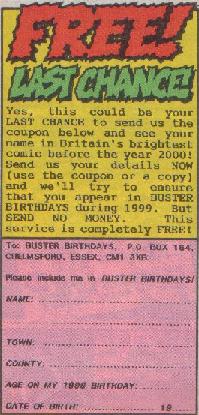 On the website we’ve often speculated how early on you knew Buster was going to end. I’ve picked up that in 1998 there was a reference something like “This is your last chance to be in Buster Birthdays” or something. So once and for all, how far out did you get that call to say this is it, we’re pulling the plug.
On the website we’ve often speculated how early on you knew Buster was going to end. I’ve picked up that in 1998 there was a reference something like “This is your last chance to be in Buster Birthdays” or something. So once and for all, how far out did you get that call to say this is it, we’re pulling the plug.
Probably a couple of months, I think, it was quite close. I don’t recall it being much longer then that, to be honest. I’m pretty sure in saying that. We worked to a four or five week leading time so what we were producing would appear in four or five weeks and I’m pretty sure it certainly wouldn’t have been more then about three months before the final issue we were told that that would be or this would be the final issue.
And what did they say at the time, do you recall?
Well I think they just said, without actually remember the final words, that we just cannot go on publishing the comic anymore, financially it’s just not viable to go into a loss making situation and it would have to be called a day.
I remember both my Dad and I actually both being a bit sad. He’d gone around to the local shop to pick up the copy and he bought it in and said it’s the final one. I was 14, he was 59 but we were both a bit sad as it was 8 years we were getting this thing. Did you get any reaction from the readers, given that some of them probably knew your address off by heart?
 Yeah, we got letters afterwards. People saying why has it packed up and we used to get letters from people who couldn’t find it too.
Yeah, we got letters afterwards. People saying why has it packed up and we used to get letters from people who couldn’t find it too.
I used to go around and look on the bookshelves, in the local stores like Tesco’s and my big grouse was that some of them never had it on sale and I used to say how can you sell a magazine when you didn’t have it on sale? But I was told that we can’t put it on sale there because we can’t operate the sale or return policy it would cost them too much to do that. They can’t put 10 copies on sale, only sell two or three of them and accept 7 copies coming back.
I always maintained the comics weren’t marketed in the way they should have been and we never got a chance, but it’s very difficult to prove that. The reps would say they’re out and about and pushing it as much as they can and doing their best.
I guess as well as Buster was the last and it was going into reprints…
I think so, I think there was more money to be made on other titles with bigger cover prices and that was it to be honest. They did what they had to but didn’t go that extra mile, unfortunately.
A couple of questions now I’ve been asking everyone who’s been taking part in the interviews the first is who did you really enjoy working with and admire in your Fleetway years?
I’ve got to say Jack Oliver. I found him an amazing guy, really. Because he lived locally I used to see quite a lot of him even when we weren’t office bound and I think his mind and his eye for detail, and his meticulous artwork….he drew same size artwork, did you know that?
Oh really? So the size it came up on page was the size he drew?
That’s right, the only person I’ve ever come across to draw like that.
And considering how much detail he went into there…
Oh it’s incredible. Some of the others like Jimmy Hansen drew one and quarter, so slightly up, but the majority drew one and a half. Some, originally started to draw twice up which was enormous pieces of artwork. But Jack always drew same size artwork and he did the whole thing, the lettering, the artwork, and when we did colouring he did colouring as well so he was the complete artist and writer, of course, he used to write his stuff as well. So I would say Jack, definitely. He was superb.
I don’t know if you’re aware of it, but Egmont released the Buster special last year…
I wasn’t aware of that, no
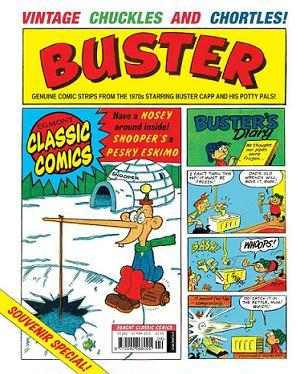 I’m going to chase my Egmont people and try and track a couple of copies for Scott Goodall as well, but what do you make of Buster coming back some ten years on from the final issue?
I’m going to chase my Egmont people and try and track a couple of copies for Scott Goodall as well, but what do you make of Buster coming back some ten years on from the final issue?
Well it’s news to me, to be honest. It was just a one-off was it?
Yeah, it was four comics, Roy of the Rovers, Misty, Battle and Buster was the last one that they brought out
Well I’m delighted, I suppose, I presume it was all reprints
It was, reprints from what I can work out it was three issues from the mid 70s and pulled them together. Some people who picked it up were disappointed with just one part of an adventure story, but it gives you a feel for Buster of the 1970s.
I’d love to see one. I had no idea at all that there was one. Obviously I go into newsagents and scan around but I suppose when that was out I probably wasn’t scanning.
It was an exclusive to WHSmiths and unfortunately because it was the last one just before Christmas but there were delays releasing it.
And the last question, this is a bit of a poser, how do you think historians will sum up the work of Buster comic when the entire catalogue is unearthed from a time capsule in 1000 years.
*laughs* Oh…..
What would you like them to say as they find this?
I’d like them to say they enjoyed them, found them funny. Because the original Buster’s in the early days contained the adventure stuff as well, so we kind of migrated away from that. But I would have thought that perhaps they can look at it and see a gentler way we treated our younger people. The children were encouraged to read and laugh and not expect too much of themselves.
They read what’s in front of them and don’t have to think too deeply the way they do these days with computer games that are so intense. But the comics were what you saw is what you got, you know. Have a chuckle then move onto the next page.
Well thank you very much for agreeing to talk to us
No problem, you’ve given me the website address so I’ll certainly be looking it up on there and keeping up to date with it.
Allen on behalf of everyone who read the comic whilst you were working on it, thank you for your efforts. I'm sure I'm not alone in having enjoyed every copy of Buster I had, regardless as to whether it was full reprints or not.
Back to the Buster Stars Interviews


 I went to work for Leonard Matthews who in those days was director and the real king pin of Fleetway comic. I was his tea boy and did a bit of running around collecting parcels, because the artists in those days used the train quite a lot to send their artwork to London and we went and got them.
I went to work for Leonard Matthews who in those days was director and the real king pin of Fleetway comic. I was his tea boy and did a bit of running around collecting parcels, because the artists in those days used the train quite a lot to send their artwork to London and we went and got them. And it was a big time for Fleetway too, because as they went through the 60s and into the 70s there were lots of comics coming along, Whizzer & Chips came alongside Buster and Whoopee launched…
And it was a big time for Fleetway too, because as they went through the 60s and into the 70s there were lots of comics coming along, Whizzer & Chips came alongside Buster and Whoopee launched… Having seen the empire grow and then contract leaving essentially just Buster, Whizzer & Chips and Whoopee, when Whoopee merged into Whizzer and Chips was that when you started realizing there wasn’t much left?
Having seen the empire grow and then contract leaving essentially just Buster, Whizzer & Chips and Whoopee, when Whoopee merged into Whizzer and Chips was that when you started realizing there wasn’t much left? So the Maxwell Group didn’t have any involvement with what was going on?
So the Maxwell Group didn’t have any involvement with what was going on? I don’t think so. No one really ever spoke to me about that. Obviously I was aware of it and we were trying desperately to keep it going just for that signing off and we only just about made it. But I can’t say for definite it was in their mind, I would think not because by that time they weren’t steeped in comic history, the people who took it on board or were involved in the end and I think it was purely by luck that we did get to where we got to.
I don’t think so. No one really ever spoke to me about that. Obviously I was aware of it and we were trying desperately to keep it going just for that signing off and we only just about made it. But I can’t say for definite it was in their mind, I would think not because by that time they weren’t steeped in comic history, the people who took it on board or were involved in the end and I think it was purely by luck that we did get to where we got to. We never actually used the original artwork; we used printer’s film. I think we just used what was available particularly towards the end. When Fleetway went through the spell of using The Best of this or the Best of that it began to gobble up a lot of the material. Although there was a wealth of old material, some of it looked old so we couldn’t use that again and it began to gobble up the material, so our choices of reprint began to diminish somewhat.
We never actually used the original artwork; we used printer’s film. I think we just used what was available particularly towards the end. When Fleetway went through the spell of using The Best of this or the Best of that it began to gobble up a lot of the material. Although there was a wealth of old material, some of it looked old so we couldn’t use that again and it began to gobble up the material, so our choices of reprint began to diminish somewhat.  On the website we’ve often speculated how early on you knew Buster was going to end. I’ve picked up that in 1998 there was a reference something like “This is your last chance to be in Buster Birthdays” or something. So once and for all, how far out did you get that call to say this is it, we’re pulling the plug.
On the website we’ve often speculated how early on you knew Buster was going to end. I’ve picked up that in 1998 there was a reference something like “This is your last chance to be in Buster Birthdays” or something. So once and for all, how far out did you get that call to say this is it, we’re pulling the plug. Yeah, we got letters afterwards. People saying why has it packed up and we used to get letters from people who couldn’t find it too.
Yeah, we got letters afterwards. People saying why has it packed up and we used to get letters from people who couldn’t find it too. I’m going to chase my Egmont people and try and track a couple of copies for Scott Goodall as well, but what do you make of Buster coming back some ten years on from the final issue?
I’m going to chase my Egmont people and try and track a couple of copies for Scott Goodall as well, but what do you make of Buster coming back some ten years on from the final issue?